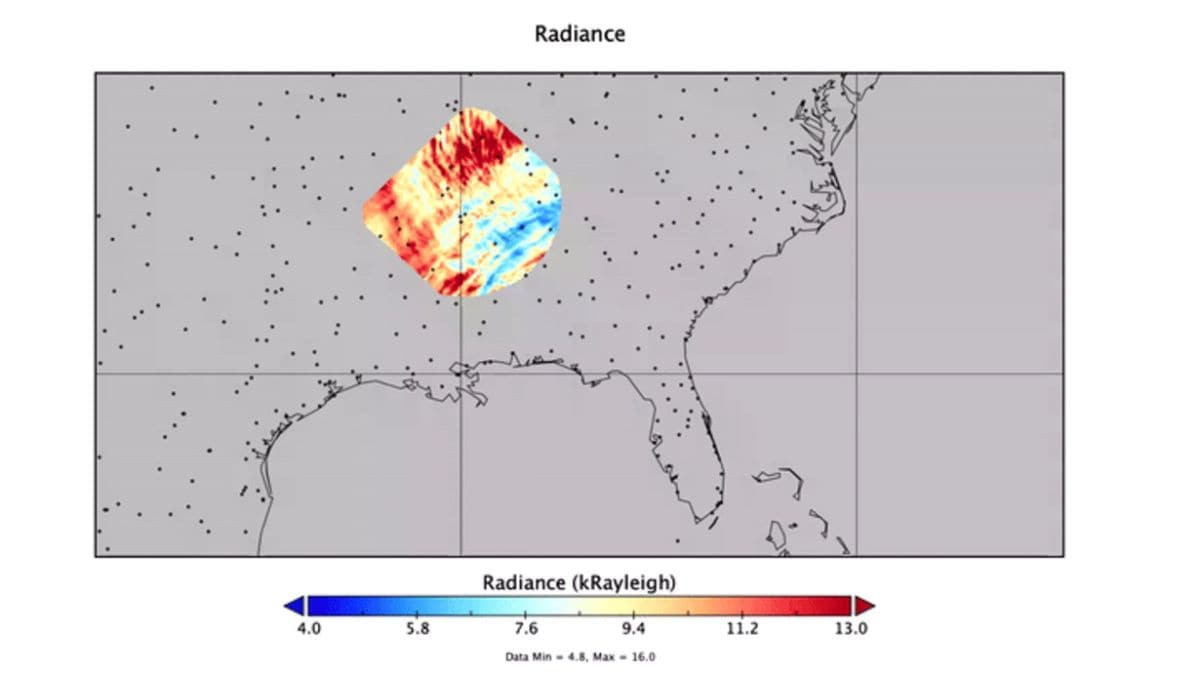On September 26, 2024, as Hurricane Helene battered Florida's Gulf Coast, it produced significant storm surges, impacting numerous communities across the region. During this extreme weather event, NASA's Atmospheric Waves Experiment (AWE), stationed aboard the International Space Station, observed gravity waves in the atmosphere approximately 55 miles above Earth's surface. This data, gathered as part of NASA's study on space weather, aims to shed light on how terrestrial weather impacts technological systems such as satellites and communication networks.
Observations from NASA's AWE Instrument
As the International Space Station crossed the southeastern United States, the AWE instrument recorded large concentric waves in the atmosphere, originating from the intense conditions stirred by Hurricane Helene. These gravity waves, which appear as artificially colored bands in red, yellow, and blue, depicted changes in radiance within the Earth's mesosphere. The imagery, enhanced with color to highlights Infrared brightness variations caused by airglow, captured waves stretching westward from northern Florida.
Significance of Atmospheric Gravity Waves
According to Ludger ScherliesPrincipal Investigator of NASA's AWE at Utah State University, the waves resemble the ripples produced when a pebble hits the surface of a pond. The instrument, launched in November 2023, was designed to identify these atmospheric disturbances, which include storms, hurricanes, and other violent weather events that cause gravity waves. The analysis of such atmospheric changes, produced during turbulent weather, provides essential insights into how terrestrial events influence conditions in space.
Research Implications for NASA
The gravity waves from Hurricane Helene are among the first images released to the public by the AWE mission. Through these observations, NASA seeks to understand how Earth's weather systems impact the upper atmosphere and space weather. The AWE instrument's ability to detect these disturbances contributes to ongoing research, enhancing NASA's efforts to assess the potential disruptions to Earth-orbiting systems.


